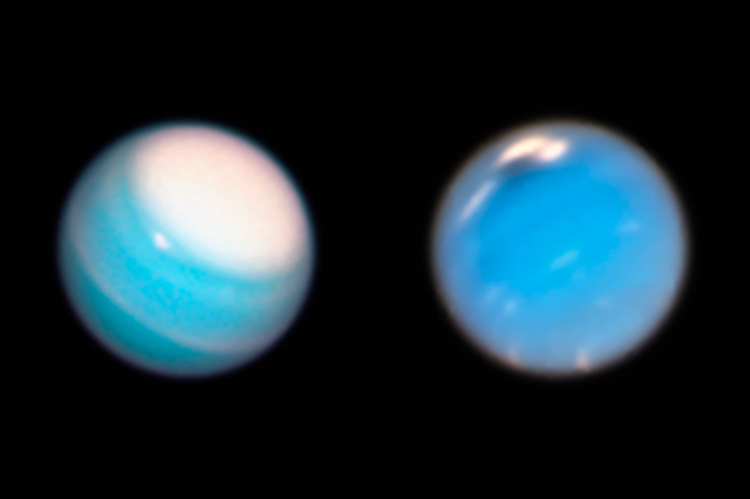Uranus and Neptune are more interesting than we thought, new images show
UC Berkeley astronomers pore over new Hubble Space Telescope images to understand what causes storms and other weather on our outermost planets

February 7, 2019
NASA’s Hubble Space Telescope has snapped the latest weather pictures of our solar system’s frigid outer planets, and UC Berkeley astronomers have jumped in to interpret them.
The new images, taken as part of a yearly monitoring program, show that a dark storm has appeared in Neptune’s northern hemisphere, the fourth seen on the planet since 1993, all of which appear and fade within a few years. UC Berkeley undergraduate student Andrew Hsu, who led a study of the latest images with associate research astronomer Michael Wong, estimates that the dark spots appear every four to six years at different latitudes and disappear after about two years.
It’s unclear how the storms form, Hsu said, but like Jupiter’s Great Red Spot, the dark vortices swirl in an anti-cyclonic direction and seem to dredge up material from deeper levels in the ice giant’s atmosphere. The latest storm was captured by Hubble in September 2018 and is roughly 6,800 miles across.
The Hubble observations show that increased cloud activity in the region as early as 2016 preceded the vortex’s appearance. The images indicate that the vortices probably develop deeper in Neptune’s atmosphere, becoming visible only when the top of the storm reaches higher altitudes.
The new snapshot of Uranus gives a fresh look at a long-lived storm circling around the north-pole region of Uranus, a planet that is usually thought of as featureless and boring.
Scientists believe that the polar cap is a result of Uranus’ unique rotation. Unlike every other planet in the solar system, Uranus is tipped onto its side. Because of this extreme tilt, during the planet’s summer the sun shines almost directly onto the north pole and never sets. Uranus is now approaching the middle of its summer season, and the polar-cap region is becoming more prominent. This polar hood may have formed by seasonal changes in atmospheric flow.
Both Neptune, the outermost planet, and Uranus are classified as ice giants. They have no solid surface. Rather, deep mantles of hydrogen and helium surround a water-rich interior, itself perhaps wrapped around a rocky core. Atmospheric methane absorbs red light but allows blue-green light to be scattered back into space, giving each planet a cyan hue.